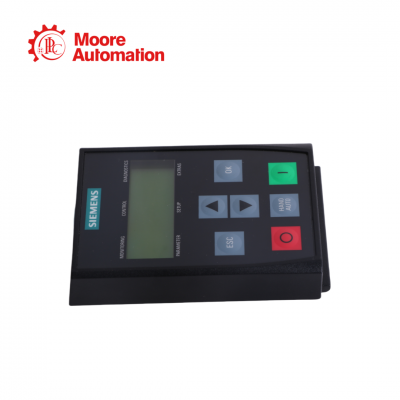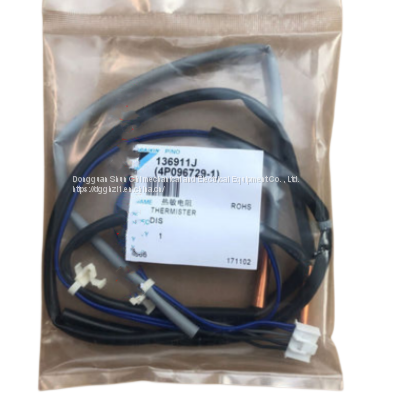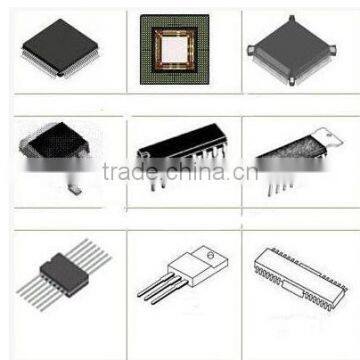Resistor Insights & Buyer's Guide
Resistors are among the most important components in the world of electronics. They are primarily responsible for regulating the amount of electric current passing through a circuit. These passive elements are made to limit the current flow according to the specified resistance value, which is measured in ohms, consequently affecting the voltage and current distribution in the entire circuit. No matter if you are a greenhorn in the field of electronics or a highly skilled professional, mastering the subtleties of resistors, from their categories to their applications, is a prerequisite for successful circuit design and analysis.
Introduction to Resistors
What is a Resistor?
A resistor is a component of electronics that is not active, and it is used to bring in or create resistance in the circuit. The major role of resistors is to limit the current to a certain level and prepare the voltages inside the circuit accordingly, so that the electronic parts work safely and effectively. Resistors can be found in different ways, such as fixed resistors, variable resistors, and precision resistors, all of which are designed to serve certain needs in circuit engineering. The resistance value, usually indicated in ohms (Ω), is one of the important traits that make up a resistor and also indicates how much resistance is going to be exerted to the current flow.
Importance of Resistors in Electronics
Resistors are an absolute must in electronics as they offer the controlling characteristics of voltage and current levels. This is the main reason why electronic circuits have to function properly. The designer can use resistors to create voltage dividers, control power dissipation, and provide the right voltage and current to components such as LEDs and integrated circuits. On top of that, resistors are very important in keeping circuits safe from overcurrent situations that might cause the components to be damaged. Activities like resistor color coding and the use of a resistor color code calculator make it possible for engineers to easily identify and select the resistor values needed for their specific applications.
Basic Principles of Resistance
Resistance is one of the basic terms in electronics, as it is the measure of the opposition to the flow of electric current through a conductor. The definition of a resistor's resistance, according to Ohm's law, is given as the relationship between the voltage across the resistor and the current that is passing through it, given as R = V/I. Understanding this principle is fundamental to knowing the role of resistors in electronic circuits. Resistance may be influenced by the material, giving the resistor a certain temperature coefficient, and the physical size of the resistor. By the use of different types of resistors, such as wirewound, carbon film, and surface mount resistors, designers can have very accurate control over the circuit parameters, thus allowing them to build complex electronic systems.
Types of Resistors
Fixed Resistors
Fixed resistors are probably one of the most widely used resistors in electronic circuits. These resistors have a non-adjustable resistance value that is predetermined; thus, they are indispensable in places where resistance stability is a must. Fixed resistors come in different forms, such as carbon film, metal film, and oxide film resistors, all of which have different characteristics in terms of temperature coefficient and power rating. The resistance value is often marked using the resistor color code, which makes it easier to select and incorporate into electronic circuits. The convenience and dependability of fixed resistors make them necessary for the construction of electronic systems.
Variable Resistors
Variable resistors, or potentiometers as they are also known, offer the option of adjusting the resistance within a circuit. A moving terminal is the element that comes into play here and enables the user to adjust the resistance value as needed with high precision. Variable resistors are an absolute necessity in the industry of voltage and current control, specifically in such applications as volume controls and tuning circuits. These components are the reason why electronic devices can be dynamically adjusted by simply altering the resistance. The ability to manually change the resistance thus makes variable resistors especially valuable in circuit prototyping and calibration, thereby guaranteeing performance optimization for a wider range of electrical conditions.
Specialized Resistor Types
Apart from fixed and variable resistors, there are also specialized types of resistors that are made for specific markets. Power resistors are one category among these, and they are designed to dissipate a lot of heat and yet remain stable at the same time. They are typically found in power supply circuits and motor drives. Another category that includes a special type of resistor is surface-mount resistors, or SMD resistors, which are small in size and perfect for high-density circuit boards. Precision resistors, due to their very low tolerances, give exactly the resistance needed in applications that require high accuracy. Each type of specialized resistor tackles a specific need in the electronics field, thus increasing the versatility and applicability of resistors in complex circuits.
Resistor Configurations in Circuits
Resistors in Series: Calculating Total Resistance
Resistors in series have the trait that they create a total resistance equal to the sum of the resistors’ values. Together, this circuit arrangement is used where the need for the resistance is greater. Total resistance can be calculated with the formula R_total = R1 + R2 + R3, etc., where R stands for the ohmic value of each resistor in ohms. This is indeed a simple calculation that guarantees that the same amount of current will pass through every resistor; therefore, series connections are suitable for applications where voltage drops across different groups of components need to be constant. Comprehension of series configurations is fundamental in designing circuits requiring precise resistance.
Resistors in Parallel: Understanding Current Distribution
The arrangement of resistors in parallel provides a different resistance calculation whereby the total resistance is still less than the resistance of the smallest individual resistor. For this reason, the formula 1/R_total = 1/R1 + 1/R2 + 1/R3, etc., is used to find out the total resistance. With this setting, the application of resistors in parallel is the availability in a more even current distribution through the circuit since the total current is distributed among the parallel branches. This configuration is most suitable in cases where the voltage across the components is to be kept constant throughout. Engineers can control and maximize the current flow within electronic circuits by mastering the calculations of parallel resistors.
Practical Applications of Series and Parallel Resistors
The two configurations of series and parallel resistors are at the heart of a multitude of practical electronics applications. When the requirement for a stable voltage at the output of components such as microcontrollers and sensors is met, series resistors are mainly utilized in voltage divider circuits. However, the use of parallel resistors in power supply circuits leads to an even current load distribution, thereby enhancing the reliability of the circuits. Besides, a similar scenario occurs in audio equipment, where a very precise resistance is required for the control of sound quality. By means of series and parallel configurations, the circuit designers would then be able to meet the very specific electrical resistance and performance criteria and thus improve the overall functionality of the electronic system.
Frequently Asked Questions (FAQs)
What is a resistor and how does it work?
A resistor is an electrical circuit element that restricts energy flow, as well as a passive component that works in this way. It does this by reducing the number of free electrons moving through it, thus consuming electrical power. This is quantified in ohms. The value of resistance in ohms of a resistor will dictate the current passing through it for any specific voltage across the resistor. Resistors are often connected in series or parallel to create whatever impedance or other circuit properties are desired. There are various types of resistors available, such as wirewound and surface mount, that suit particular applications. Consequently, it is important to know the operation of resistors to effectively design electronic circuits.
What are the different types of resistors?
Resistors can be categorized into different types according to their design and application. While fixed resistors have constant resistance values, variable resistors, such as potentiometers, change the resistance. Fixed resistors comprise wirewound, carbon composition, and metal oxide types. In addition, the resistors that are mounted on the PCB using the through-hole method and the surface mount resistors are also the same according to their mounting style on the printed circuit boards. They each have individual characteristics that are suitable for specific electronic components and circuit designs.
How do you read a resistor color code?
The resistor color code refers to a method of depicting the resistance value and the tolerance of a resistor. Typically, four or five colored stripes on a resistor indicate the resistor's resistance value. The first two or three stripes are assigned to significant digits, followed by the next stripe showing the multiplier. The tolerance is represented by the fourth stripe, and it is expressed as a percentage. For example, a resistor with color bands of red-red-brown-gold signals a resistance of 22 ohms with ±5% tolerance. Therefore, becoming proficient in reading color codes is a must for asserting the right resistor values in electronic circuits.
What is the difference between resistors in series and resistors in parallel?
Resistors may be configured in series or parallel as circuit components, affecting their total resistance value. The equivalent resistance of a series connection is the summation of the individual resistances. This arrangement heightens the total resistance and thus decreases the current. On the other hand, a parallel formation provides lower total resistance, finally resulting in increased current through the circuit. The rule to evaluate total resistance in parallel circuits involves the reciprocal of the sum of the individual resistances' reciprocals. Therefore, it is necessary to comprehend these two circuit formations so as to be able to build up efficient resistor networks.
How do you calculate the resistance value of a resistor?
The resistance value of a resistor can be determined by means of the color code of the resistor or by directly measuring it with a multimeter. The color code method involves identifying the color bands on the resistor and converting them to numerical values. Then apply the relevant calculation depending on whether the resistor is of four or five-band configuration. Resistor color code calculators can also aid in quickly finding the resistance value. In addition, knowing the power rating of the resistor is essential since it informs how much electrical energy the resistor can dissipate without getting hot.
What are resistor networks, and how are they used?
Resistor networks consist of several resistors connected together in different ways to produce a certain resistance value or circuit behavior. They are often used to create voltage dividers, filter circuits, or as part of more complex electronic components. In a resistor network, resistors can be connected in series, parallel, or a combination of both, providing a vast range of resistance values and configurations. When precision and space efficiency are needed, these networks are especially important, for instance, in printed circuit boards. Every electronics engineer needs to understand how to design and work with resistor networks.
 ISM11 QSM11 Engine Parts Corrosion Resistor Head 3819767US$ 52.00 - 58.00MOQ: 1 PieceHunan Shanbuzhuanshuizhuan Power Technology Co.,Ltd1 Yr
ISM11 QSM11 Engine Parts Corrosion Resistor Head 3819767US$ 52.00 - 58.00MOQ: 1 PieceHunan Shanbuzhuanshuizhuan Power Technology Co.,Ltd1 Yr Siemens 6SL3255-0AA00-4CA1NegotiableMOQ: 1 PieceUsage: Rectifier TransformerXiamen Amikon Limited1 Yr
Siemens 6SL3255-0AA00-4CA1NegotiableMOQ: 1 PieceUsage: Rectifier TransformerXiamen Amikon Limited1 Yr Daikin Thermal Resistor R1T C 9 Probe ST8601-1C FXDP71QPVCUS$ 200 - 1000MOQ: 1 PieceBrand Name: DaikinPlace of Origin: ChinaModel Number: Daikin Thermal resistor R1T C 9 probe ST8601-1C FXDP71QPVCCertification: ULDongguan Shun Chi Mechanical And Electrical Equipment Co. , Ltd.3 Yrs
Daikin Thermal Resistor R1T C 9 Probe ST8601-1C FXDP71QPVCUS$ 200 - 1000MOQ: 1 PieceBrand Name: DaikinPlace of Origin: ChinaModel Number: Daikin Thermal resistor R1T C 9 probe ST8601-1C FXDP71QPVCCertification: ULDongguan Shun Chi Mechanical And Electrical Equipment Co. , Ltd.3 Yrs Wirewound Resistor KNP ResistorNegotiableMOQ: 1 PiecePlace of Origin: ChinaModel Number: MOFHebi Boda Electronic Science And Technology Co., Ltd.5 Yrs
Wirewound Resistor KNP ResistorNegotiableMOQ: 1 PiecePlace of Origin: ChinaModel Number: MOFHebi Boda Electronic Science And Technology Co., Ltd.5 Yrs Welding ResistorNegotiableMOQ: 1000 PiecesPlace of Origin: Guangdong, ChinaBrand Name: YezhanModel Number: JSRType: Fixed ResistorShenzhen Yezhan Electronics Co., Ltd.5 Yrs
Welding ResistorNegotiableMOQ: 1000 PiecesPlace of Origin: Guangdong, ChinaBrand Name: YezhanModel Number: JSRType: Fixed ResistorShenzhen Yezhan Electronics Co., Ltd.5 Yrs Resistor N1608Z800T01US$ 100 - 1,000MOQ: 10 PiecesPlace of Origin: Hainan, ChinaBrand Name: TOKModel Number: N1608Z800T01Package Type: Surface MountShenzhen Oriental Components Limited5 Yrs
Resistor N1608Z800T01US$ 100 - 1,000MOQ: 10 PiecesPlace of Origin: Hainan, ChinaBrand Name: TOKModel Number: N1608Z800T01Package Type: Surface MountShenzhen Oriental Components Limited5 Yrs Resistor CRCW1210825RFKEAUS$ 0.01 - 1MOQ: 10 PiecesPlace of Origin: Taiwan, ChinaBrand Name: Well-knownModel Number: CRCW1210825RFKEAPackage Type: Surface MountOcean Technology Company Ltd.5 Yrs
Resistor CRCW1210825RFKEAUS$ 0.01 - 1MOQ: 10 PiecesPlace of Origin: Taiwan, ChinaBrand Name: Well-knownModel Number: CRCW1210825RFKEAPackage Type: Surface MountOcean Technology Company Ltd.5 Yrs Manufacturer Pakheng 200 Ohm Resistor Wirewound ResistorUS$ 3.5 - 30MOQ: 500 PiecesPlace of Origin: Guangdong, ChinaBrand Name: PAK HENGModel Number: RX24Type: Fixed ResistorShenzhen Pak Heng Electronics Co., Ltd.5 Yrs
Manufacturer Pakheng 200 Ohm Resistor Wirewound ResistorUS$ 3.5 - 30MOQ: 500 PiecesPlace of Origin: Guangdong, ChinaBrand Name: PAK HENGModel Number: RX24Type: Fixed ResistorShenzhen Pak Heng Electronics Co., Ltd.5 Yrs TC2603 Resistor Series Zero Ohm DIP ResistorUS$ 0.01 - 1MOQ: 5000 PiecesPlace of Origin: Taiwan, ChinaBrand Name: ThunderModel Number: ZType: Fixed ResistorThunder Components Ltd.5 Yrs
TC2603 Resistor Series Zero Ohm DIP ResistorUS$ 0.01 - 1MOQ: 5000 PiecesPlace of Origin: Taiwan, ChinaBrand Name: ThunderModel Number: ZType: Fixed ResistorThunder Components Ltd.5 Yrs Electronic Components / Resistors / Resistor 3movs VaristorNegotiableMOQ: 100 PiecesPlace of Origin: Jiangsu, ChinaBrand Name: AnguangModel Number: 20D821-LType: Other, Varistor, Resistor 3movs VaristorChangzhou Anguang Electrical Appliance Co., Ltd.5 Yrs
Electronic Components / Resistors / Resistor 3movs VaristorNegotiableMOQ: 100 PiecesPlace of Origin: Jiangsu, ChinaBrand Name: AnguangModel Number: 20D821-LType: Other, Varistor, Resistor 3movs VaristorChangzhou Anguang Electrical Appliance Co., Ltd.5 Yrs Resistor 0603 J 470K Smd Chip ResistorsUS$ 0.01 - 1MOQ: 1 PiecePlace of Origin: ArmeniaBrand Name: originalModel Number: 0603 J 470KType: Other, smd resistorShenzhen E-Best Industrial Co., Limited5 Yrs
Resistor 0603 J 470K Smd Chip ResistorsUS$ 0.01 - 1MOQ: 1 PiecePlace of Origin: ArmeniaBrand Name: originalModel Number: 0603 J 470KType: Other, smd resistorShenzhen E-Best Industrial Co., Limited5 Yrs 70W 5OHM 70W5RJ ResistorUS$ 1 - 2MOQ: 10 PiecesPlace of Origin: Guangdong, ChinaBrand Name: 70W 5OHM 70W5RJ resistorModel Number: 70W 5OHM 70W5RJ resistorType: Fixed ResistorShenzhen Antech Electronics Limited5 Yrs
70W 5OHM 70W5RJ ResistorUS$ 1 - 2MOQ: 10 PiecesPlace of Origin: Guangdong, ChinaBrand Name: 70W 5OHM 70W5RJ resistorModel Number: 70W 5OHM 70W5RJ resistorType: Fixed ResistorShenzhen Antech Electronics Limited5 Yrs High Voltage ResistorsNegotiableMOQ: 1 SetPlace of Origin: ChinaShenzhen Pak Heng Electronics Co., Ltd.5 Yrs
High Voltage ResistorsNegotiableMOQ: 1 SetPlace of Origin: ChinaShenzhen Pak Heng Electronics Co., Ltd.5 Yrs POWER Resistor R401 100OHMNegotiableMOQ: 1Model Number: R401 100OHMShenzhen Jia Ye Technology Co., Ltd.5 Yrs
POWER Resistor R401 100OHMNegotiableMOQ: 1Model Number: R401 100OHMShenzhen Jia Ye Technology Co., Ltd.5 Yrs Power Electrical Resistor CoilUS$ 0.5 - 0.8MOQ: 3000 PiecesPlace of Origin: Guangdong, ChinaBrand Name: GEModel Number: GEDongguan Golden Eagle Coil Co., Ltd.5 Yrs
Power Electrical Resistor CoilUS$ 0.5 - 0.8MOQ: 3000 PiecesPlace of Origin: Guangdong, ChinaBrand Name: GEModel Number: GEDongguan Golden Eagle Coil Co., Ltd.5 Yrs Aluminum Case for Power ResistorUS$ 2,500 - 3,500MOQ: 1 TonPlace of Origin: Guangdong, ChinaGrade: 6000 SeriesTemper: T3-T8Application: Other, Other, Windows and Doors and IndustrialFoshan Nanhai Meixia Aluminium Co., Ltd.5 Yrs
Aluminum Case for Power ResistorUS$ 2,500 - 3,500MOQ: 1 TonPlace of Origin: Guangdong, ChinaGrade: 6000 SeriesTemper: T3-T8Application: Other, Other, Windows and Doors and IndustrialFoshan Nanhai Meixia Aluminium Co., Ltd.5 Yrs Varistor Resistor 07D391KNegotiableMOQ: 1000 PiecesPlace of Origin: Guangdong, ChinaBrand Name: ZOV/VDR/CNR/CB/TVRModel Number: 07D391KType: VaristorDongguan Reomax Electronic Co., Ltd.5 Yrs
Varistor Resistor 07D391KNegotiableMOQ: 1000 PiecesPlace of Origin: Guangdong, ChinaBrand Name: ZOV/VDR/CNR/CB/TVRModel Number: 07D391KType: VaristorDongguan Reomax Electronic Co., Ltd.5 Yrs Blower Motor Resistor XS6H9AB19CAUS$ 5 - 15MOQ: 50 PiecesType: Other, blower motor resistorSize: SAME AS OEM SIZECar Make: MitsubishIOE NO.: XS6H9AB19CARuian Chenho Auto Electronic Co., Ltd.5 Yrs
Blower Motor Resistor XS6H9AB19CAUS$ 5 - 15MOQ: 50 PiecesType: Other, blower motor resistorSize: SAME AS OEM SIZECar Make: MitsubishIOE NO.: XS6H9AB19CARuian Chenho Auto Electronic Co., Ltd.5 Yrs Original Series of Capacitors ResistorsUS$ 0.00001 - 1MOQ: 1 RollPlace of Origin: Guangdong, ChinaBrand Name: OriginalModel Number: Capacitors ResistorsType: OtherWalsoon Technology Co., Ltd.5 Yrs
Original Series of Capacitors ResistorsUS$ 0.00001 - 1MOQ: 1 RollPlace of Origin: Guangdong, ChinaBrand Name: OriginalModel Number: Capacitors ResistorsType: OtherWalsoon Technology Co., Ltd.5 Yrs Yxs 0805 SMD Resistor 5% Precision Error 27 Ohm ResistorUS$ 0.0022 - 0.0032MOQ: 1000 PiecesBrand Name: N/APlace of Origin: ChinaModel Number: 0805-05-39Type: Fixed ResistorShenzhen YXS Technology Co., Ltd.5 Yrs
Yxs 0805 SMD Resistor 5% Precision Error 27 Ohm ResistorUS$ 0.0022 - 0.0032MOQ: 1000 PiecesBrand Name: N/APlace of Origin: ChinaModel Number: 0805-05-39Type: Fixed ResistorShenzhen YXS Technology Co., Ltd.5 Yrs Stock (Resistor ) RCWP12060000Z0EA 3-PIN Resistor LINK R1206US$ 0.009 - 0.01MOQ: 1000 PiecesModel Number: RCWP12060000Z0EABrand Name: naD/C: 13+Package: NAShenzhen Huachengweiye Electronics Co., Ltd.5 Yrs
Stock (Resistor ) RCWP12060000Z0EA 3-PIN Resistor LINK R1206US$ 0.009 - 0.01MOQ: 1000 PiecesModel Number: RCWP12060000Z0EABrand Name: naD/C: 13+Package: NAShenzhen Huachengweiye Electronics Co., Ltd.5 Yrs BLOWER FAN MOTOR Resistor 64118362931,64118385549,64116929486,64118380580,64118383835,64116929540US$ 10 - 12MOQ: 10 PiecesBrand Name: GOGOPlace of Origin: Zhejiang, ChinaModel Number: CDL-14041Type: OtherSuzhou Qqqpet Electronic Technology Co., Ltd.5 Yrs
BLOWER FAN MOTOR Resistor 64118362931,64118385549,64116929486,64118380580,64118383835,64116929540US$ 10 - 12MOQ: 10 PiecesBrand Name: GOGOPlace of Origin: Zhejiang, ChinaModel Number: CDL-14041Type: OtherSuzhou Qqqpet Electronic Technology Co., Ltd.5 Yrs Procurement Lead submitted an RFQ for Wenzhou Yika Metal Oxide Resistor for Low Voltage Arrester58 minutes ago
Procurement Lead submitted an RFQ for Wenzhou Yika Metal Oxide Resistor for Low Voltage Arrester58 minutes ago Procurement Specialist requested specs for Horizontal style 7W cement fixed power resistor20 hours ago
Procurement Specialist requested specs for Horizontal style 7W cement fixed power resistor20 hours ago Business Owner verified certifications for 6441L2 Heater Resistor For Citroen C5 C3 C2 Peugeot 107 207 607 Blower Motor Resistor For Renault Scenic2025-10-26 20:28:46
Business Owner verified certifications for 6441L2 Heater Resistor For Citroen C5 C3 C2 Peugeot 107 207 607 Blower Motor Resistor For Renault Scenic2025-10-26 20:28:46 Lead Purchaser inquired about Blue 4 Watt 1 % 0.1R / 10M E96 Metal Film Resistor For PCB , Electrical Resistor2025-10-23 02:13:28
Lead Purchaser inquired about Blue 4 Watt 1 % 0.1R / 10M E96 Metal Film Resistor For PCB , Electrical Resistor2025-10-23 02:13:28 Business Owner inquired about 200w wirewound resistor3 hours ago
Business Owner inquired about 200w wirewound resistor3 hours ago Purchaser requested a quote for 1000W Power Resistors2025-10-25 02:50:13
Purchaser requested a quote for 1000W Power Resistors2025-10-25 02:50:13 Importer requested specs for resistor variable resistors varistor color resistance smd dip electronic component ic chips2025-10-22 19:47:47
Importer requested specs for resistor variable resistors varistor color resistance smd dip electronic component ic chips2025-10-22 19:47:47 Lead Purchaser inquired about Golden Resistor2025-10-23 12:03:57
Lead Purchaser inquired about Golden Resistor2025-10-23 12:03:57 Business Owner verified certifications for SMD resistor NPO2025-10-22 23:28:12
Business Owner verified certifications for SMD resistor NPO2025-10-22 23:28:12 Sourcing Manager inquired about Cement resistor 5Watts horizontal style cement fixed resistor2025-10-26 03:25:46
Sourcing Manager inquired about Cement resistor 5Watts horizontal style cement fixed resistor2025-10-26 03:25:46 D-sub Cable With Resistor and CapacitorUS$ 3 - 4MOQ: 500 PiecesBrand Name: PCMModel Number: D-SUBPlace of Origin: Guangdong, ChinaInterface Type: Audio / Video InterfaceDongguan Premier Cable Co., Ltd.5 Yrs
D-sub Cable With Resistor and CapacitorUS$ 3 - 4MOQ: 500 PiecesBrand Name: PCMModel Number: D-SUBPlace of Origin: Guangdong, ChinaInterface Type: Audio / Video InterfaceDongguan Premier Cable Co., Ltd.5 Yrs Hot Sale Good Price Auto Resistor 2108211551US$ 2 - 25MOQ: 500 SetsBrand Name: BOCHIPlace of Origin: ChinaBochi Corporation5 Yrs
Hot Sale Good Price Auto Resistor 2108211551US$ 2 - 25MOQ: 500 SetsBrand Name: BOCHIPlace of Origin: ChinaBochi Corporation5 Yrs Flat Heating Resistance Ribbon Cr15Ni60 for ResistorUS$ 15 - 40MOQ: 30 KilogramsBrand Name: CunruiPlace of Origin: ChinaModel Number: ni60cr15Type: Nickel StripJiangsu Cunrui Metal Products Co., Ltd.5 Yrs
Flat Heating Resistance Ribbon Cr15Ni60 for ResistorUS$ 15 - 40MOQ: 30 KilogramsBrand Name: CunruiPlace of Origin: ChinaModel Number: ni60cr15Type: Nickel StripJiangsu Cunrui Metal Products Co., Ltd.5 Yrs 60W Long Life Resistor Ceramic RodUS$ 0.8 - 2.8MOQ: 100 PiecesBrand Name: Century soldering ironModel Number: SJ-607Dongguan Century Hardware Tools S & T Co., Ltd.5 Yrs
60W Long Life Resistor Ceramic RodUS$ 0.8 - 2.8MOQ: 100 PiecesBrand Name: Century soldering ironModel Number: SJ-607Dongguan Century Hardware Tools S & T Co., Ltd.5 Yrs Electric 5K Nonlinear-Resistors , PTC Thermistor For HeaterNegotiableMOQ: 1 PieceBrand Name: UCHIPlace of Origin: ChinaModel Number: PTC Thermistor HeaterDongguan Uchi Electronics Co.,Ltd.5 Yrs
Electric 5K Nonlinear-Resistors , PTC Thermistor For HeaterNegotiableMOQ: 1 PieceBrand Name: UCHIPlace of Origin: ChinaModel Number: PTC Thermistor HeaterDongguan Uchi Electronics Co.,Ltd.5 Yrs Longlife Popular Resistor Igniter for Wood Pellet BurnerUS$ 2,500 - 30,000MOQ: 1 UnitCondition: NewPlace of Origin: Shandong, ChinaBrand Name: ROTEXMASTERModel Number: YGF-20-1Shandong Rotex Machinery Co., Ltd.5 Yrs
Longlife Popular Resistor Igniter for Wood Pellet BurnerUS$ 2,500 - 30,000MOQ: 1 UnitCondition: NewPlace of Origin: Shandong, ChinaBrand Name: ROTEXMASTERModel Number: YGF-20-1Shandong Rotex Machinery Co., Ltd.5 Yrs 27150ED70A Blower Fan Motor Resistor FOR Japanese CarUS$ 1 - 5MOQ: 100 PiecesBrand Name: fengmingModel Number: 27150ED70ASize: Standard SizeType: Other, Blower, Brand NewGuangzhou Fengming Auto Parts Co., Ltd.5 Yrs
27150ED70A Blower Fan Motor Resistor FOR Japanese CarUS$ 1 - 5MOQ: 100 PiecesBrand Name: fengmingModel Number: 27150ED70ASize: Standard SizeType: Other, Blower, Brand NewGuangzhou Fengming Auto Parts Co., Ltd.5 Yrs







